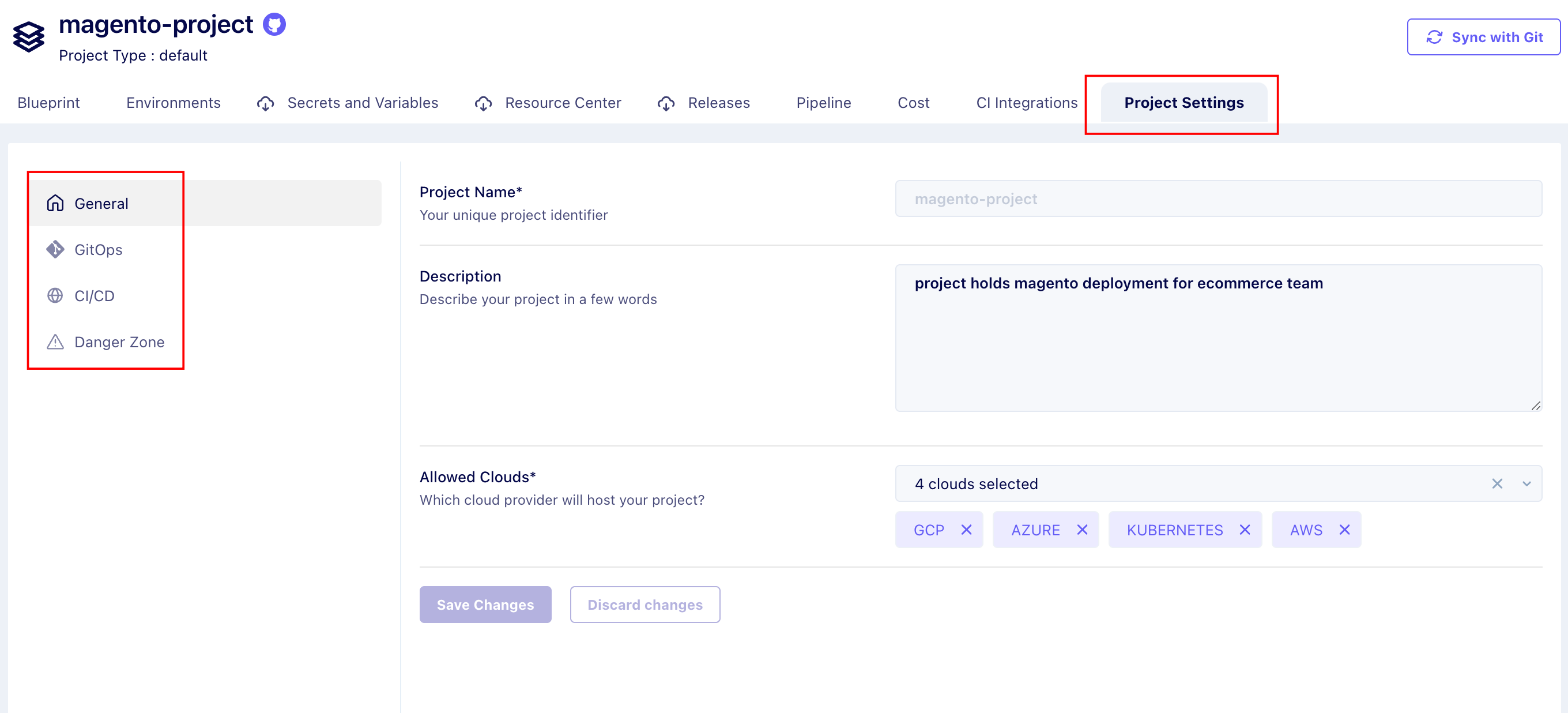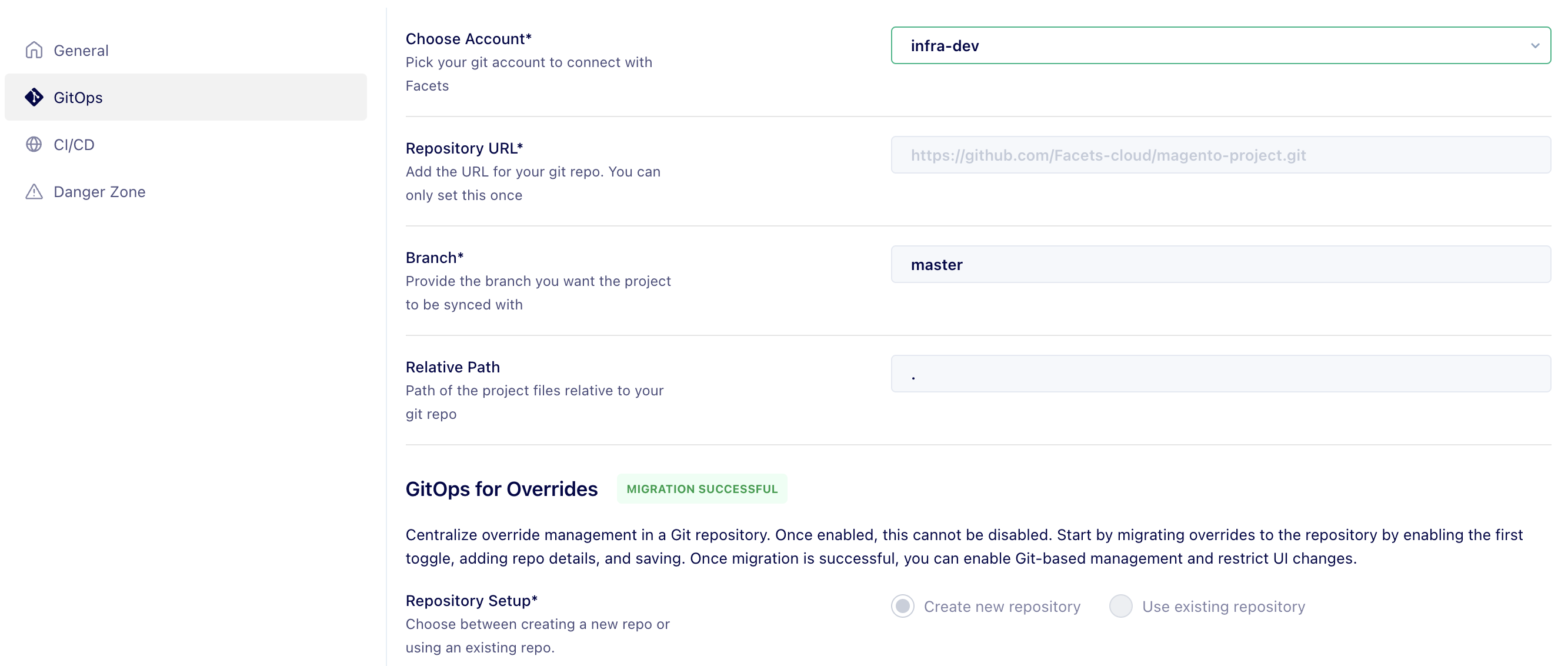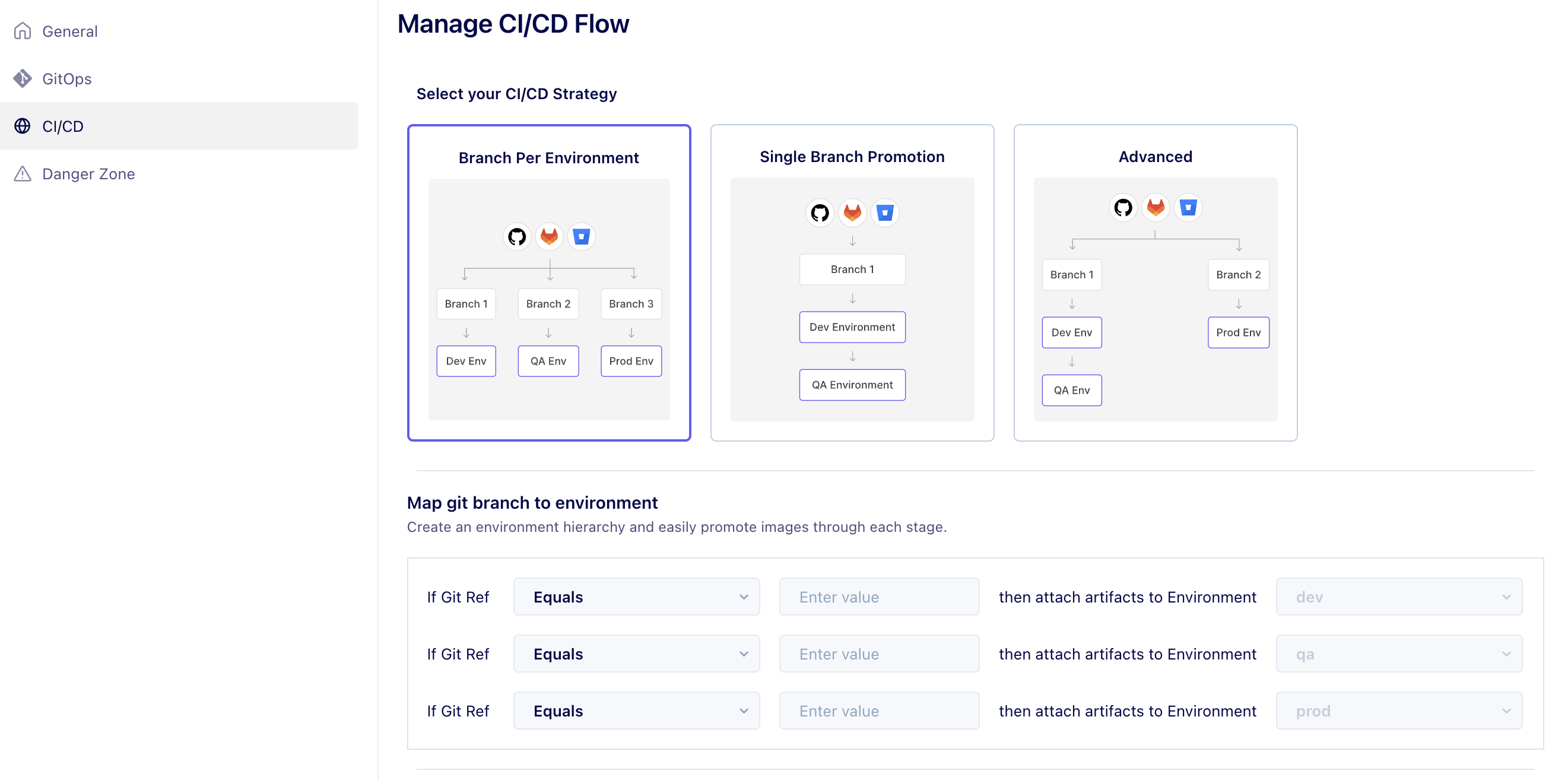Project Settings
Settings specific to a Project
1. Accessing Project Settings
To access the project settings:

- Open the Projects tab and select the relevant project.
- Click the Project Settings tab, which contains the following sections: General, GitOps, CI/CD, and Danger Zone.
2. General Settings
In the General section, you can:
- Project Name: View the uneditable project name.
- Description: Edit the project summary.
- Allowed Clouds: View the selected cloud service provider.
Note: After making any changes, click Save Changes to apply them.
3. GitOps Settings
The GitOps section allows you to manage and modify the blueprint through your GitHub repository.

Key Options:
- Choose Account: Displays the GitOps account added during project creation.
- Repository URL: Displays the URL of the repository added during project setup.
- Branch: Shows the branch containing the blueprint.
- Relative Path: Displays the directory path containing the blueprint, relative to the repository URL.
GitOps for Overrides:
- Purpose: Manage environment-specific configuration overrides directly from the Git repository.
- Enabling GitOps for Overrides: Once enabled, overrides are migrated to the Git repository, and you can no longer make changes through the UI.
- Restrict UI Changes: When enabled, Git takes precedence, and any concurrent changes must be made from the repository.
- Important: This setting is irreversible once activated. Ensure all overrides are properly migrated before enabling it.
Reminder: After making any changes, click Save Changes.
4. CI/CD Settings
The CI/CD section allows you to automate your deployments by setting up rules and workflows:

Deployment Options:
- Branch Per Environment: Map each Git branch to its corresponding environment for efficient testing.
- Single Branch Promotion: Link one branch to an environment and automatically promote changes to other environments.
- Advanced: Create custom Git rules for mapping branches and setting up flexible promotion workflows.
To know more about CI/CD Settings, refer to
5. Danger Zone
The Danger Zone section contains options for deleting the project:

- Click Delete.
- Type Confirm in the pop-up window.
- Click Delete again to finalize the deletion.
Updated 6 months ago